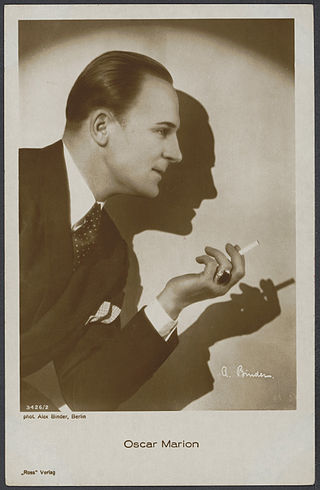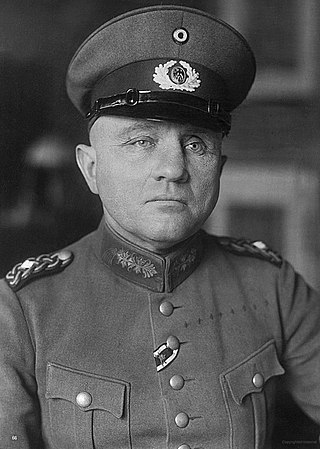
Reichswehr was the official name of the German armed forces during the Weimar Republic and the first years of the Third Reich. After Germany was defeated in World War I, the Imperial German Army was dissolved in order to be reshaped into a peacetime army. From it a provisional Reichswehr was formed in March 1919. Under the terms of the Treaty of Versailles, the rebuilt German Army was subject to severe limitations in size, structure and armament. The official formation of the Reichswehr took place on 1 January 1921 after the limitations had been met. The German armed forces kept the name Reichswehr until Adolf Hitler's 1935 proclamation of the "restoration of military sovereignty", at which point it became part of the new Wehrmacht.

A Generaloberst was the second-highest general officer rank in the German Reichswehr and Wehrmacht, the Austro-Hungarian Common Army, the East German National People's Army and in their respective police services. The rank was equal to a four-star full general but below a general field marshal. The rank was equivalent to a Generaladmiral in the Kriegsmarine until 1945 or to a Flottenadmiral in the Volksmarine until 1990. It was the highest ordinary military rank and the highest military rank awarded in peacetime; the higher rank of general field marshal was awarded only in wartime by the head of state. In general, a Generaloberst had the same privileges as a general field marshal.
The 25th Division, officially the Grand Ducal Hessian (25th) Division, was a unit of the Prussian/German Army. It was headquartered in Darmstadt, the capital of the Grand Duchy of Hesse. The division was subordinated in peacetime to XVIII Army Corps when that corps was formed in 1899. The division was disbanded in 1919, during the demobilization of the German Army after World War I.
This is the German Army order of battle on the outbreak of World War I in August 1914.
The 5th Division was a unit of the Reichswehr.
The 2nd Division was a unit of the Reichswehr.
The 3rd Division was a unit of the Reichswehr.
The 4th Division was a unit of the Reichswehr.
The 6th Division was a unit of the Reichswehr.
The 7th Division was a unit of the Reichswehr.
The 1st Cavalry Division was a unit of the Reichswehr, the armed forces of Germany during the Weimar Republic.
The 2nd Cavalry Division was a unit of the Reichswehr, the armed forces of Germany during the Weimar Republic.
The 1st Division was a unit of the Reichswehr, the armed forces of Germany during the Weimar Republic.
Hans-Hellmuth Pfeifer was a German general during World War II. A veteran of World War I, he held higher command positions in WWII, among other, that of the 65th Infantry Division in Italy, selecting its hand grenade symbol which earned the nickname "The Hand Grenade Division."
Viktor von Schwedler was a general in the Wehrmacht of Nazi Germany who commanded an army corps and a military district during World War II. He was awarded the Knight's Cross of the Iron Cross.
Arnold Christian Maria Joseph Rüdiger Freiherr von Biegeleben was a German general during World War II who commanded the 6th Infantry Division of the Wehrmacht. He was awarded the Knight's Cross of the Iron Cross.
Generalleutnant Walter von Hippel (Luftwaffe) (27 May 1897 – 29 November 1972) was a general in the Luftwaffe of Nazi Germany during World War II who commanded several flak divisions. He was also a recipient of the Knight's Cross of the Iron Cross.

Oskar Marion was an Austrian film actor.

Hugo Max von Kayser was a German General of the Cavalry of World War I. He was known for being a major military figure of the Reichswehr after the war's conclusion, commanding the 2nd Cavalry Division.
Friedrich "Fritz" Haselmayr was a long-serving German professional military officer who was in active service under the German Empire, the Weimar Republic and Nazi Germany. He participated in both world wars and attained the rank of Generalleutnant. He was also a member of the Nazi Party and worked on military policy issues in its national leadership. As a member of the Party's paramilitary unit, the Sturmabteilung (SA), he reached the rank of SA-Obergruppenführer. He also was a deputy in the Landtag of Bavaria and in the German Reichstag.



